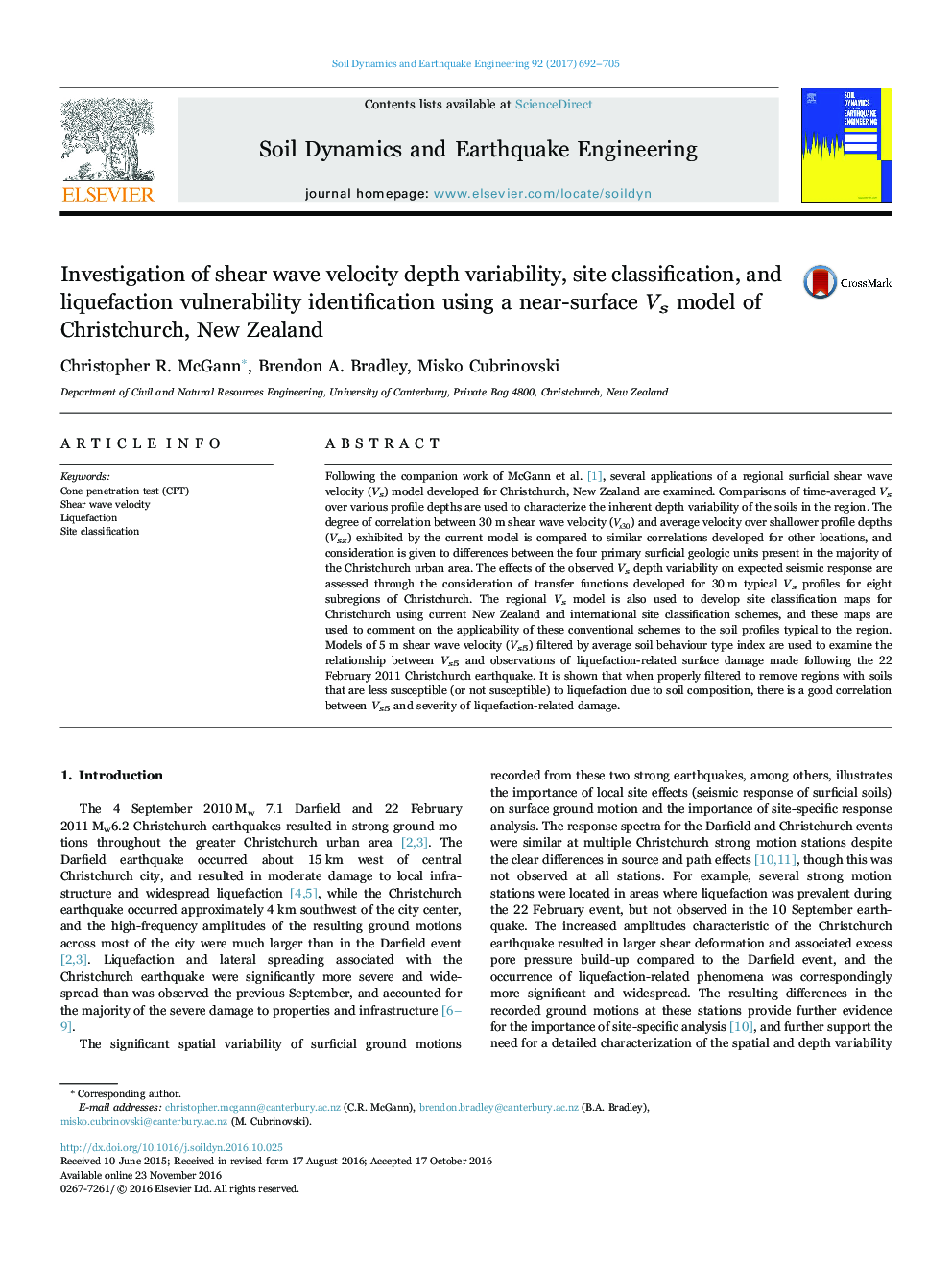| Article ID | Journal | Published Year | Pages | File Type |
|---|---|---|---|---|
| 4927201 | Soil Dynamics and Earthquake Engineering | 2017 | 14 Pages |
â¢Christchurch NZ soils studied using high-resolution near-surface regional Vs model.â¢Depth variability assessed by comparing models of Vs averaged over different depths.â¢30 m typical Vs profiles used to assess variability in expected seismic response.â¢Site classification maps developed for Christchurch using NZ and international codes.â¢Correlation between Vs5 and observed liquefaction-related damage is examined.
Following the companion work of McGann et al. [1], several applications of a regional surficial shear wave velocity (Vs) model developed for Christchurch, New Zealand are examined. Comparisons of time-averaged Vs over various profile depths are used to characterize the inherent depth variability of the soils in the region. The degree of correlation between 30Â m shear wave velocity (Vs30) and average velocity over shallower profile depths (Vsz) exhibited by the current model is compared to similar correlations developed for other locations, and consideration is given to differences between the four primary surficial geologic units present in the majority of the Christchurch urban area. The effects of the observed Vs depth variability on expected seismic response are assessed through the consideration of transfer functions developed for 30Â m typical Vs profiles for eight subregions of Christchurch. The regional Vs model is also used to develop site classification maps for Christchurch using current New Zealand and international site classification schemes, and these maps are used to comment on the applicability of these conventional schemes to the soil profiles typical to the region. Models of 5Â m shear wave velocity (Vs5) filtered by average soil behaviour type index are used to examine the relationship between Vs5 and observations of liquefaction-related surface damage made following the 22 February 2011 Christchurch earthquake. It is shown that when properly filtered to remove regions with soils that are less susceptible (or not susceptible) to liquefaction due to soil composition, there is a good correlation between Vs5 and severity of liquefaction-related damage.
